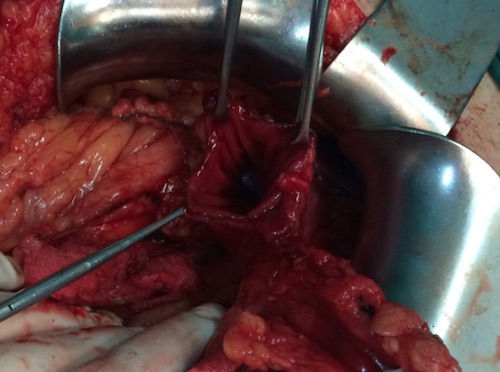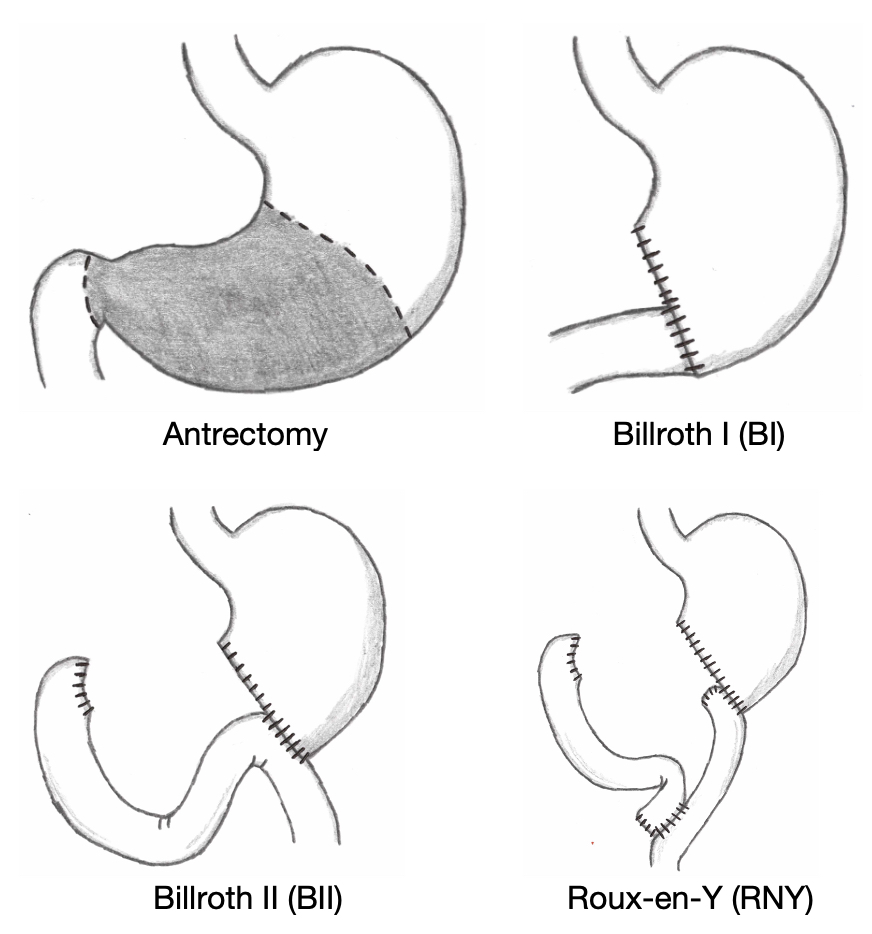Stomach Trauma
Stomach Trauma
David Ray Velez, MD
Table of Contents
Background
Etiology
- Most Common in Penetrating Trauma
- Less Common in Blunt Trauma Due to the Thick Wall
- Unless the Stomach is Full, there is a High Blunt Force, or Seat Belts are Worn Improperly
In Blunt Stomach Injuries, there are Often Concomitant Injuries to Other Organs in the Abdomen or Chest Due to the High Blunt Force Required
Mechanism of Injury
- Penetrating Mechanisms:
- Direct Injury – Tearing & Crushing Force Through Tissue Along the Trajectory of the Projectile & its Fragments
- Gunshot Wounds Have an Additional Dissipation of Kinetic Energy That Causes Further Damage
- Cavitation – As a High Energy Projectile Moves Through Tissue Energy Causes a Radial Stretching, Forming a Temporary Cavity with Additional Tissue Damage
- Higher Energy Projectiles Create Larger Cavities & Cause More Damage
- Shock Wave – The Projectile Creates Rapid Changes in Pressure & Temperature that Propagate Through Tissue Causing Additional Injury
- Direct Injury – Tearing & Crushing Force Through Tissue Along the Trajectory of the Projectile & its Fragments
- Blunt Mechanisms:
- Crushing Force – Direct Compression Causing Injury
- Shearing Force – Tearing from Acceleration/Deceleration Around Fixed Attachments
- Bursting Force – Force Causing Acutely Increased Intraluminal Pressure within Hollow Organs Leading to Rupture

Traumatic Stomach Perforation 1
Presentation and Diagnosis
Presentation
- Mostly Nonspecific
- Abdominal Pain
- Chest Pain
- Nausea and Vomiting
- Hematemesis
- NG/OG Tube with Bloody Aspirate
May Be Diagnosed on CT or Intraoperatively
AAST Stomach Injury Grade
- *See AAST
- Injury Scale is Under Copyright
Treatment
Anterior Wounds Should Mandate Exploration of the Lesser Sac to Inspect for Posterior Wounds (Incise the Gastrocolic Ligament to Enter the Lesser Sac)
Any Hematoma After Penetrating Trauma Should Be Opened and Explored to Evaluate for Occult Injury Beneath
Simple Laceration/Perforation: Primary Repair vs. Wedge Resection
- One-Layer Repair: Use Nonabsorbable Suture
- Two-Layer Repair: Inner Absorbable, Outer Nonabsorbable
Significant Tissue Loss/Devascularization: Partial Gastrectomy and Reconstruction (Billroth I/II vs. Roux-en-Y)
- If Too Severe to Reconstruct: Total Gastrectomy and Roux-en-Y Esophagojejunostomy
Delay to Surgery with Perforation is Associated with Increased Morbidity and Mortality

Reconstruction After Partial Gastrectomy
References
- Angelopoulos S, Mantzoros I, Kyziridis D, Fontalis A, Parpoudi S, Konstandaras D, Tsalis C. A rare case of a transabdominal impalement after a fall from a ladder. Int J Surg Case Rep. 2016;22:40-3. (License: CC BY-NC-ND-4.0)
